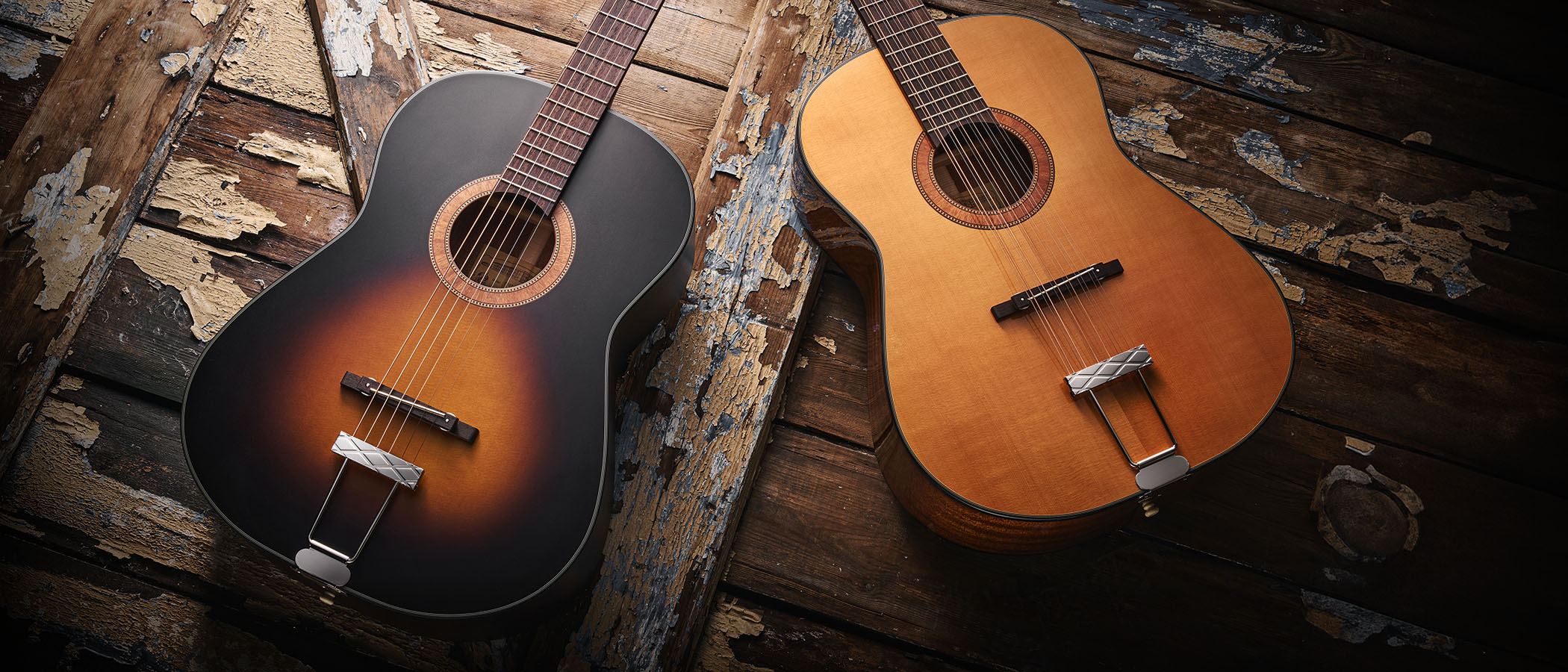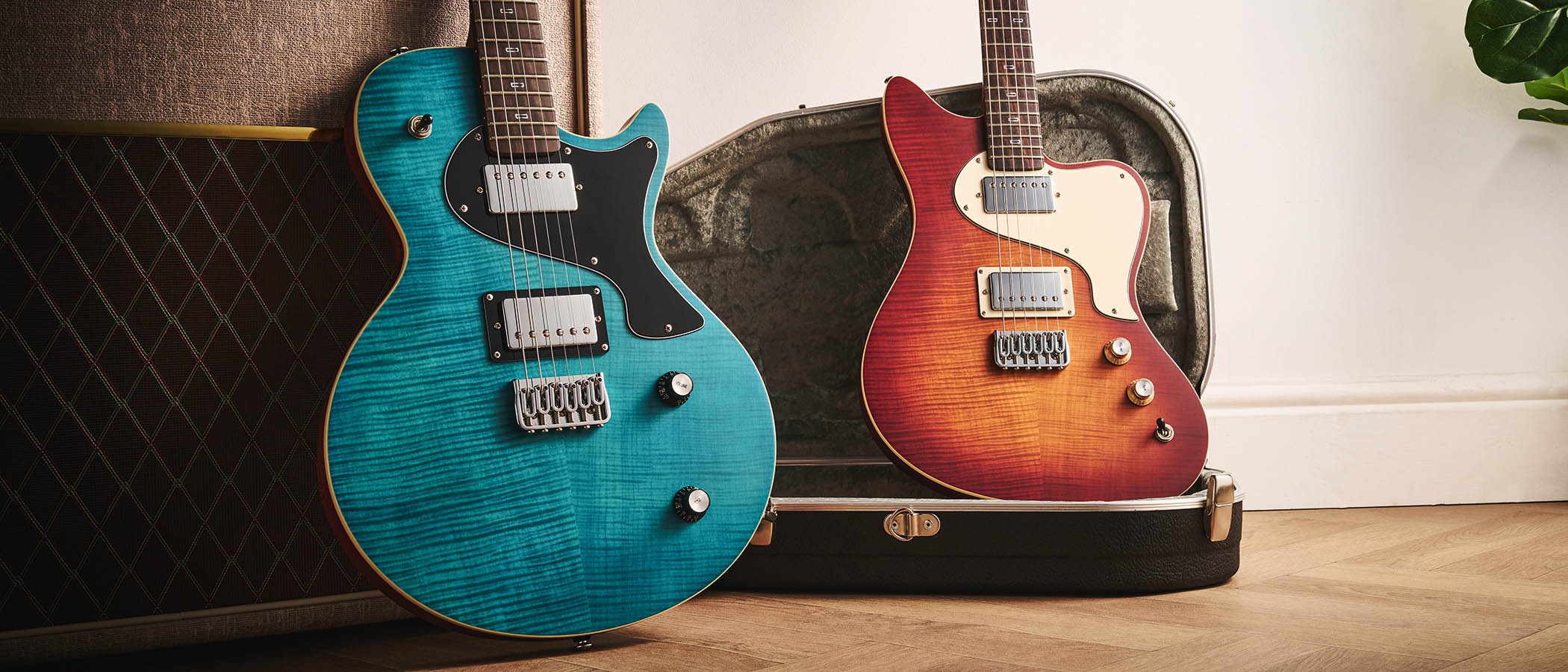Guitar World Verdict
It’s true to say that there are guitars out there that would do a similar job – and many of them may cost less. But if it’s the whole ’60s chic, floating bridge, jazz-box tailpiece and (as far as the 12 is concerned) Beatles association that appeals to you, then we’d recommend you seek them out.
Pros
- +
12-string has the Lennon association.
- +
Bright, mud-free 12-string sound.
- +
Vintage chic.
Cons
- -
Small frets and flat fingerboard will take some getting used to.
- -
The price might be north of what you’d want to pay.
- -
6-string's slightly boxy sound won’t suit everyone.
You can trust Guitar World
What is it?
The backstory to John Lennon’s association with the Framus Hootenanny 12-string is a tale for another day. But the basic headlines are that Lennon bought his Framus acoustic guitar in 1964, allegedly inspired by Bob Dylan’s use of a 12-string on a recent recording.
It made its first appearance with The Beatles in the studio during the sessions for Help! and subsequently on Rubber Soul, and can be seen in the film footage from the movie Help! during the You’ve Got To Hide Your Love Away sequence.
Subsequently, the guitar was gifted to a friend and ended up packed away in an attic until its rediscovery and verification a few years ago. When it reached Julien’s auction in New York in May last year, it went for an eye-watering $2.8 million.
The good news is that Beatles fans without such deep pockets can now recreate their own fab moments thanks to Framus reissuing the exact model used on those historic recordings. And as a bonus, Framus has released a six-string Hootenanny from the same period, too. Alas, this never featured in The Beatles’ long and rich history, but it’s nice to have it along for the ride.
Of the original Hootenanny 12-string guitar, Julien’s text accompanying the auction lot states: “When strummed, it immediately identifies itself as that guitar. If you know the chords, Beatles tunes fall out of the soundhole effortlessly. Like an audio time-capsule from 1965, the Framus is a direct link to those records.”
How faithful its 21st-century doppelgänger is in that respect remains to be seen – and heard, of course – but our curiosity, particularly that of the ardent Beatles fans among our number, was stirred.
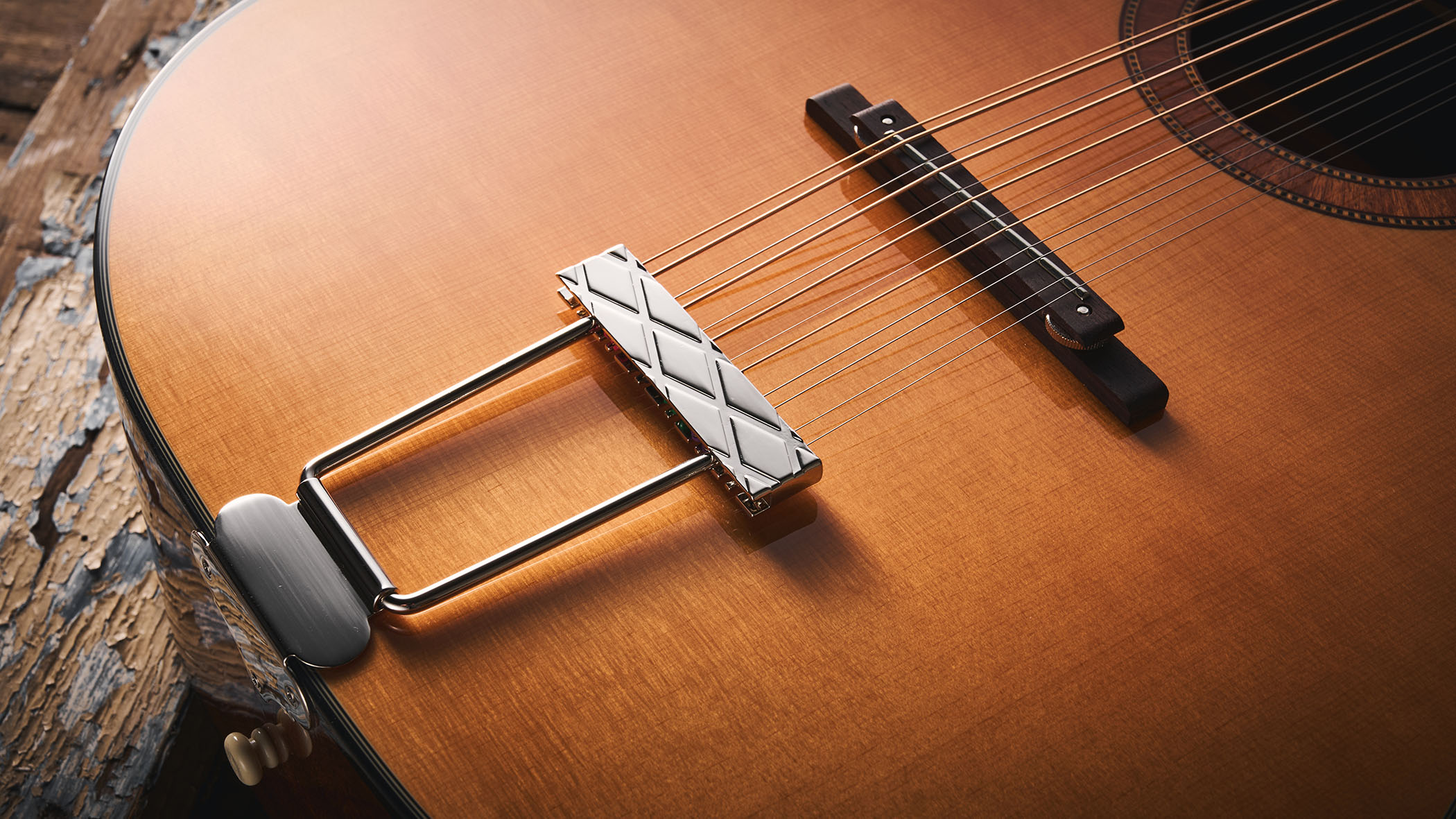
Obviously the star of the show here is the 12-string and so that was the instrument we first plucked from its case. The first thing that struck us was the ’50s/’60s look of the guitar. It definitely is a bit of a time capsule in its own right in that respect.
All the latest guitar news, interviews, lessons, reviews, deals and more, direct to your inbox!
We’re all used to contemporary acoustic designs, many of which, if not all, are based on guitars hailing from the big names in the USA. But back then there was a distinctly European flavour to the look of some acoustics.
For instance, how long is it since you’ve seen a floating bridge on an acoustic guitar? They were, and still are, commonplace on archtops but comparatively rare in the acoustic world. And metal string saddles are another mark of the past.
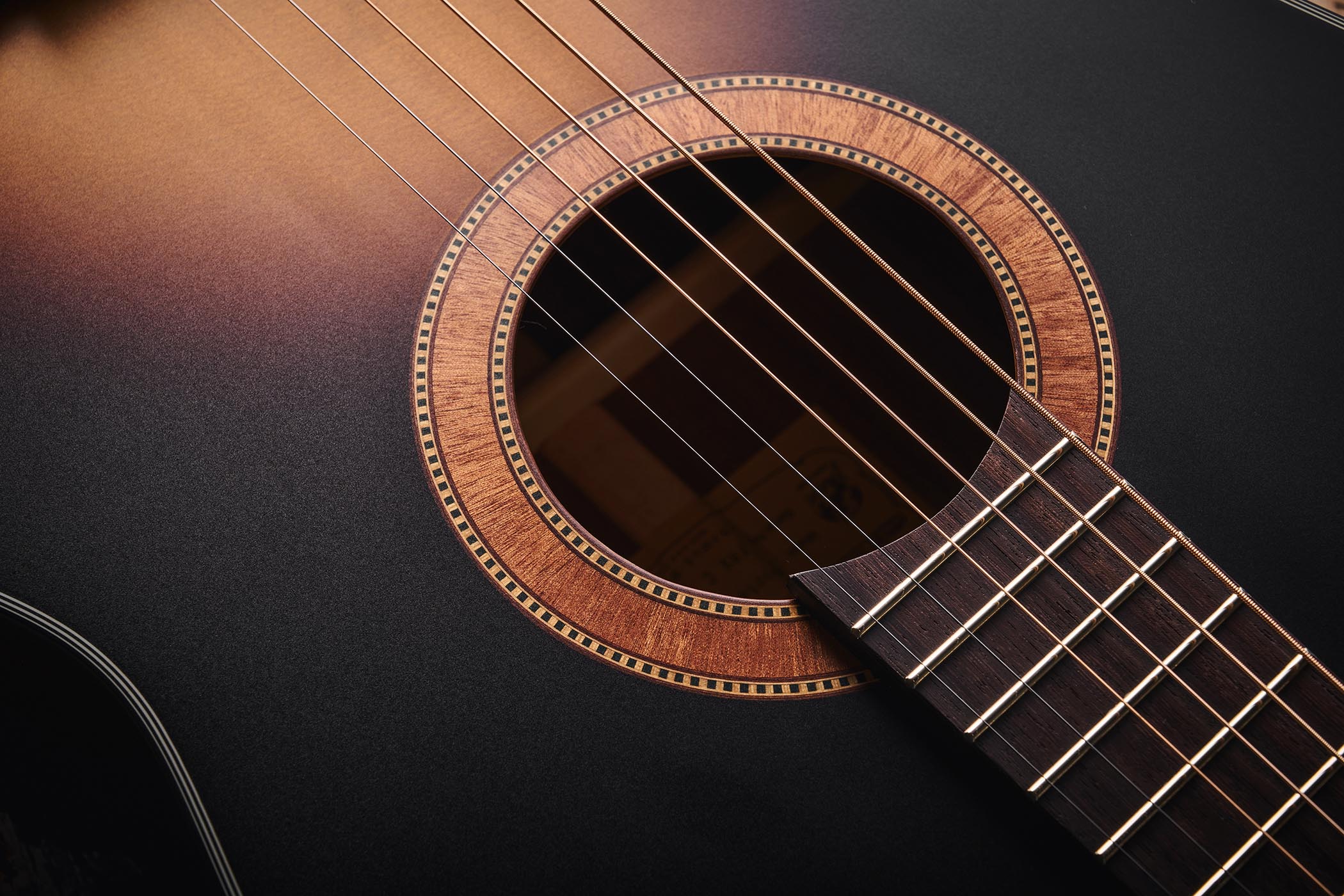
Gibson experimented with adjustable saddles on some of its mid-’60s acoustics and it’s certainly true that the ability to raise or lower the action with a thumbwheel is less time-consuming than taking a trip to a luthier to shave a bone saddle to gain the same effect.
Then there’s the archtop-like tailpiece and zero fret to take into account. All hallmarks of a different age and furnishings that help fix the Hootenanny to a point in time.
Looking past the guitar’s inherent quirkiness, we find a spruce top with sapele back and sides. Lennon’s original had mahogany for its back and sides, but while this is a diversion from the ’60s spec, sapele is a good enough substitute.
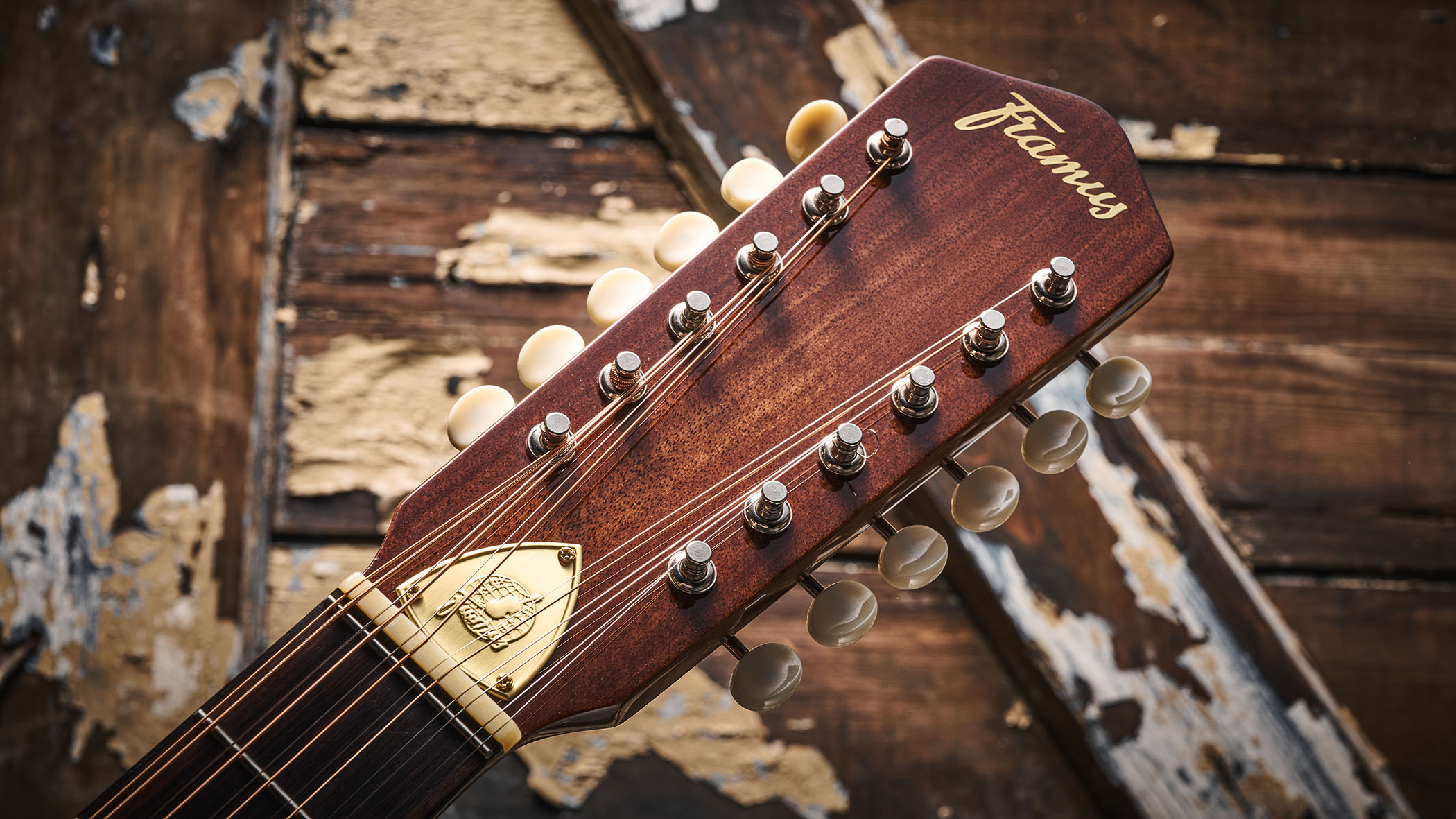
Another surprise is the nitrocellulose finish throughout, and beyond that Framus offers a variety of different finishes for both models including sunburst, high polish or satin.
The neck is mahogany with a distinct wide and shallow D profile; it shares many characteristics with that of a classical guitar in that respect. And the likeness to classical guitars doesn’t end there as the rosewood fingerboard is completely flat with no radiusing at all.
While we’re down the business end, we’ll add that the frets are very low, too. Not 1950s Gibson Fretless Wonder low, but at 0.96mm they’re on the skinny side. As a comparison, a Les Paul Standard we have to hand measures in at 1.29mm fret height.
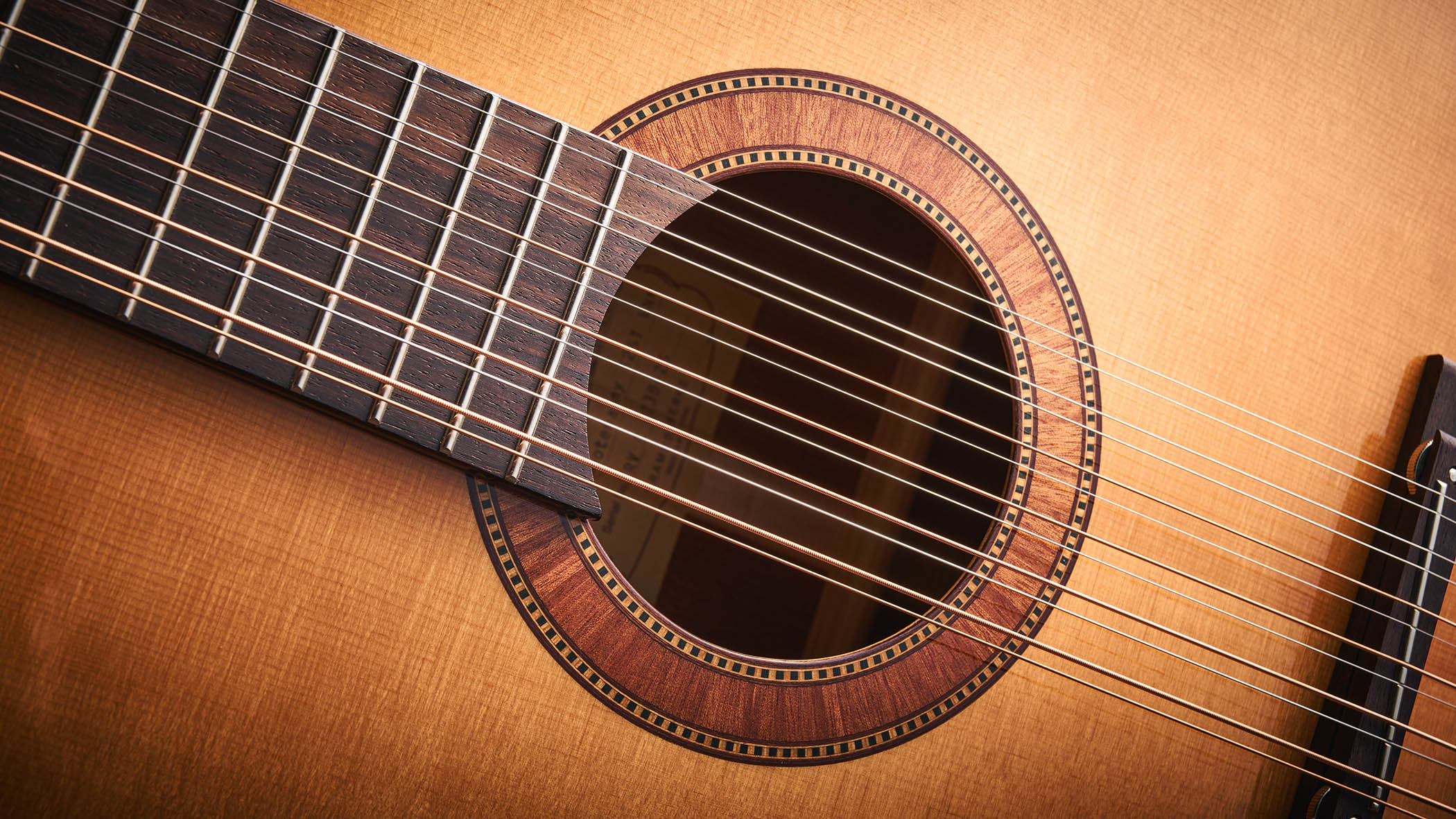
The six-a-side tuners have Kluson-like casings and vintage-inspired white buttons and the truss rod cover is gold-coloured metal that has been embossed with the Framus logo. It’s also a nice touch that both guitars come with a choice of two different self-adhesive scratchplates that you can choose between to complete that 60s look.
The spec sheet tells us that the Hootenanny is a “round-shouldered dreadnought”, but it’s a little more trim than the standard 380mm to 400mm widest-point dread dimensions at 374mm. Once again, overall, the body doesn’t look too far off from the outlines of a classical guitar, rather than the bulk of a contemporary D-18 or J-45.
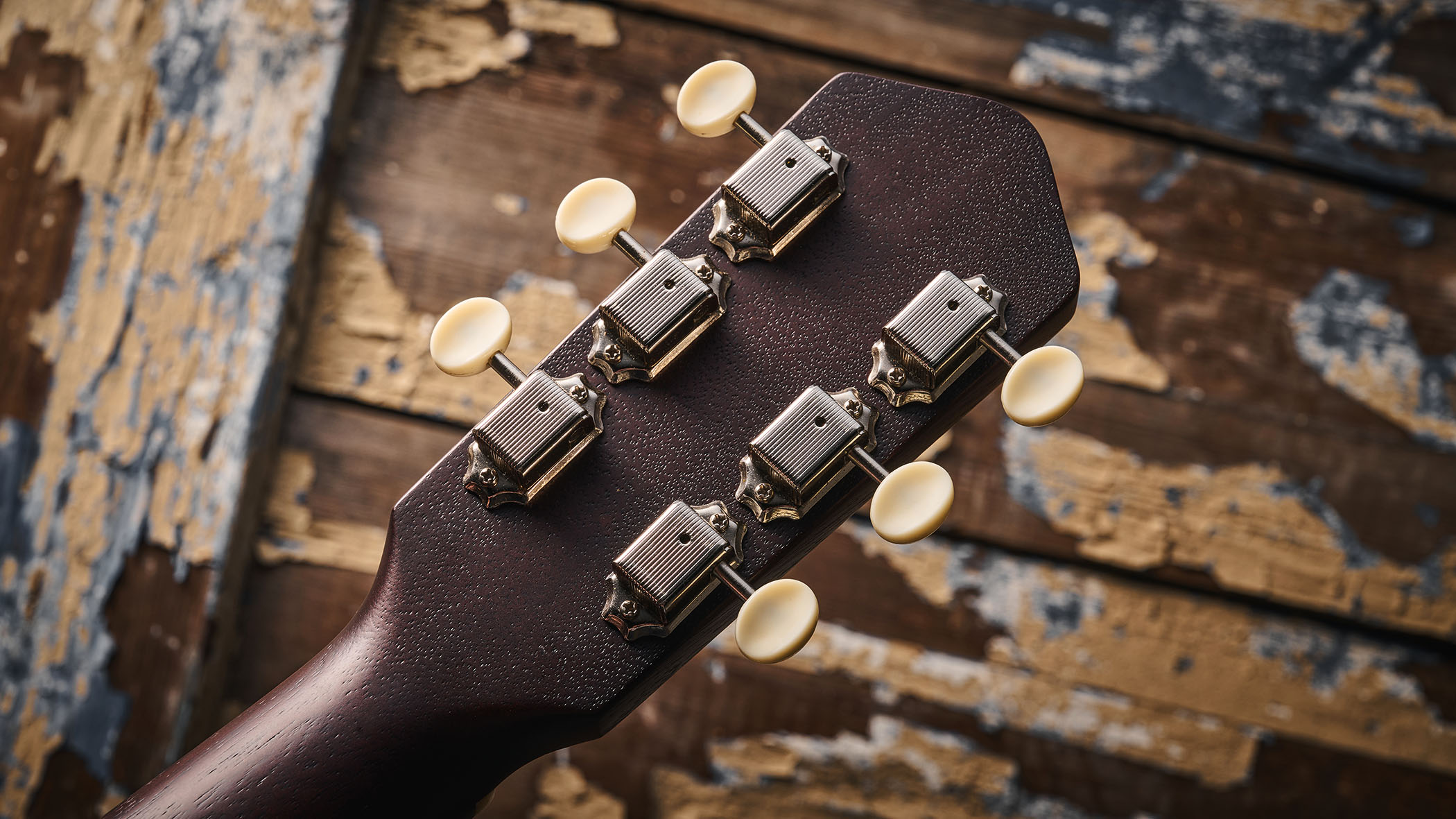
Whereas you might expect the 12’s six-string sidekick to be essentially more of the same, and this is true in terms of body furnishings and materials, it goes rogue when it comes to body shape. Once again the spec hails the six as a “round-shouldered dreadnought”, but it is decidedly smaller.
To look at it without a tape measure in hand, you’d swear it was more of a folk size or a slightly more meaty 00. In any case, the Hootenanny 6-string arrives with an attractive dark sunburst and a satin finish. As we’ve said, many of the 12’s construction details are to be found here, including the tailpiece, floating adjustable bridge, spruce top and sapele back and sides.
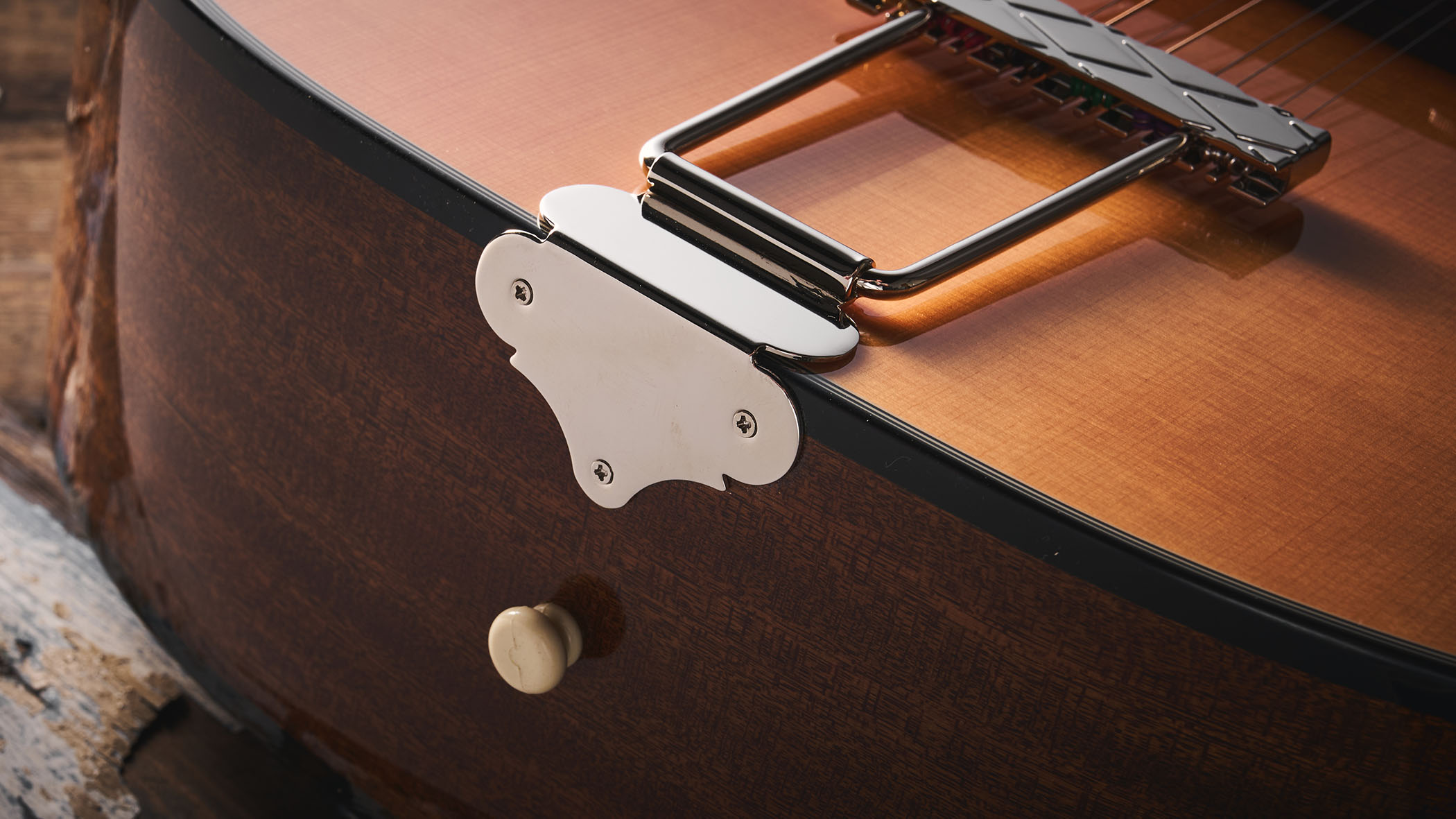
It certainly maintains that unmistakable ’60s vibe of acoustic guitars from Europe found on its sibling. Obviously, the neck dimensions are different – although we still have those low frets and flat fingerboard – but the profile is a more comfy C, rather than the 12’s D.
Casting a critical eye over both instruments reveals that the build is good in both cases, but the crux of the matter is how they sound. Will we be able to summon up the 12-string spirit of Lennon and Harrison? There’s only one way to find out...
Specs
Framus Hootenanny 6-string
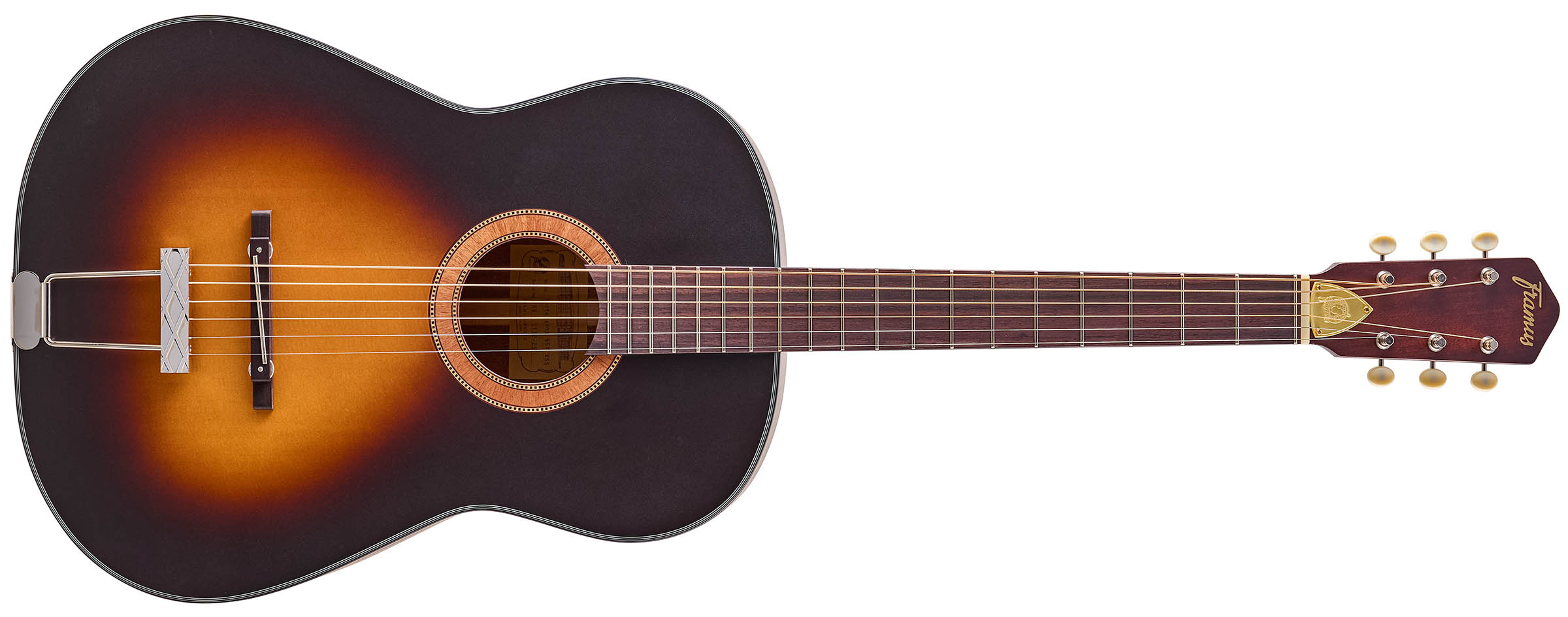
- Price: £809 (approx. $1,040 – inc hard case)
- Origin: China
- Type: Round shoulder dreadnought
- Top: Sitka spruce
- Back/Sides: Sapele
- Max Rim Depth: 113mm
- Max Body Width: 372mm
- Neck: Mahogany
- Scale Length: 643mm
- Tuners: Vintage-style, closed nickel, ivory coloured buttons
- Nut/Width: Bone/44mm
- Fingerboard: Rosewood
- Frets: 19
- Bridge/Spacing: Height-adjustable rosewood with metal saddle
- Electrics: N/A
- Weight (kg/lb): 1.45/3.2
- Options: Finishes only: Vintage Natural High Polish or Sunburst High Polish (£899), Vintage Natural Nitro High Polish or Sunburst Nitro High Polish (£989)
- Range Options: Hootenanny 12-String
- Left-Handers: No
- Finish: Vintage Sunburst Satin
Framus Hootenanny 12-string
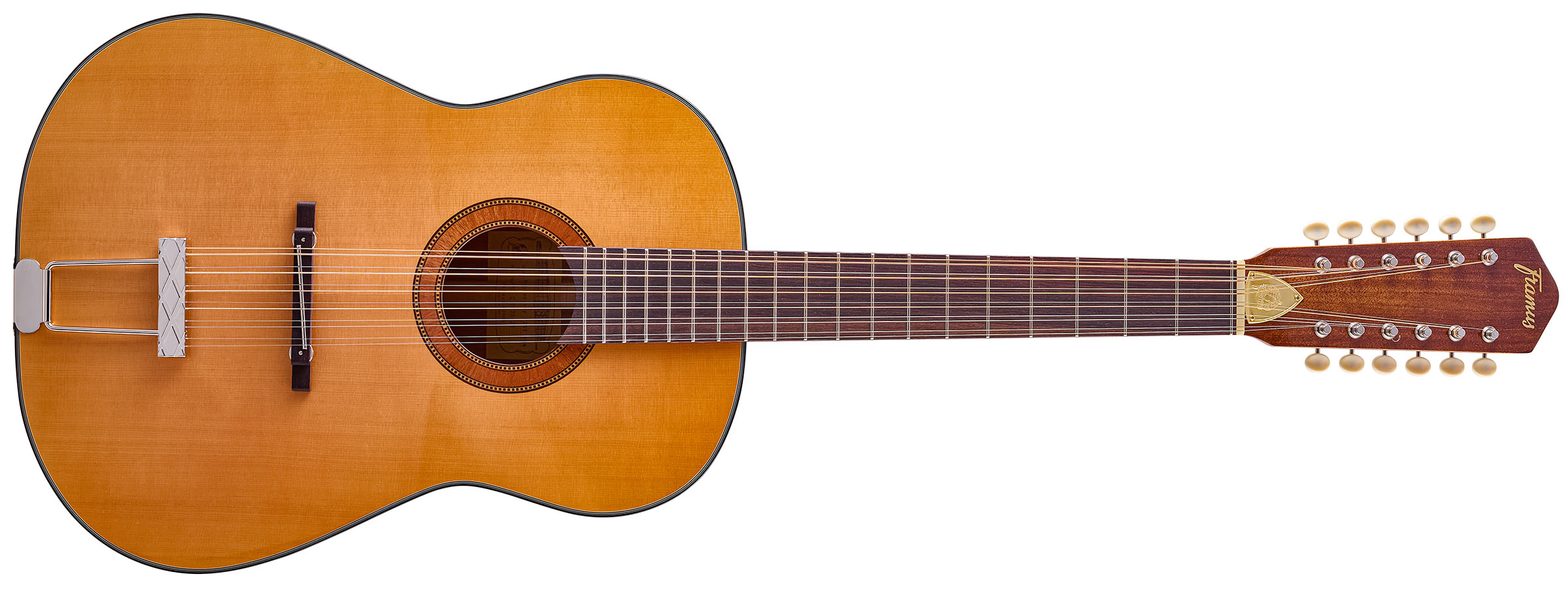
- Price: £1,050 (approx. $1,145 – inc hard case)
- Origin: China
- Type: 12-string dreadnought
- Top: Sitka spruce
- Back/Sides: Sapele
- Max Rim Depth: 114mm
- Max Body Width: 374mm
- Neck: Mahogany
- Scale Length: 645mm
- Tuners: Vintage-style closed nickel, ivory-coloured buttons
- Nut/Width: Bone/50mm
- Fingerboard: Rosewood
- Frets: 19
- Bridge/Spacing: Height-adjustable rosewood with metal saddle
- Electrics: N/A
- Weight (kg/lb): 1.99/4.4
- Options: Finishes only: Vintage Natural Satin or Sunburst Satin (£870), Vintage Natural High Polish or Sunburst High Polish (£960)
- Range Options: Just the Hootenanny 6-String in either plain or sunburst finishes (as above)
- Left-Handers: No
- Finish: Vintage Natural Nitro High Polish
- Contact: Framus
Playability and sounds
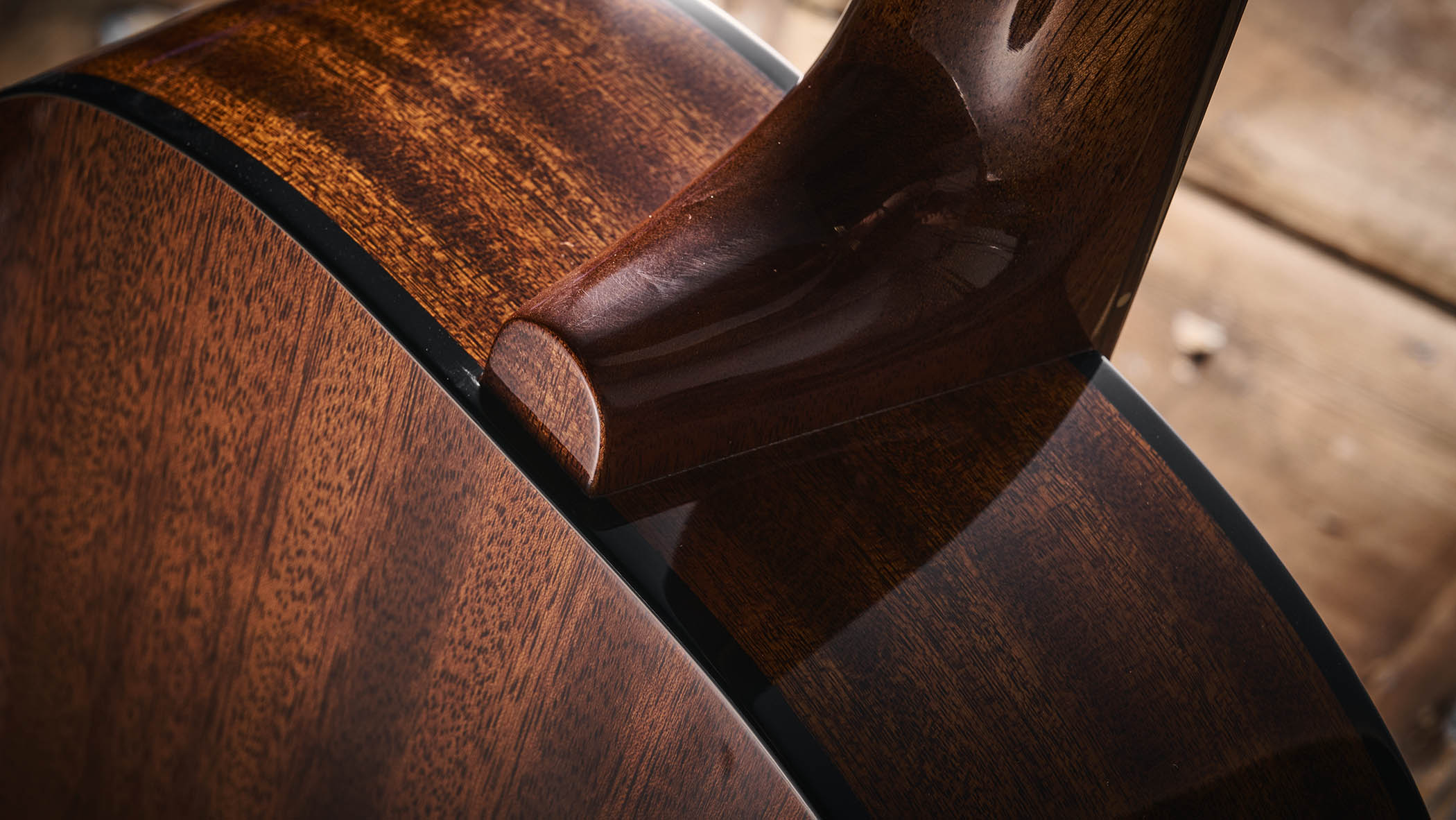
We’ve all heard the jokes about the time it takes to tune a 12-string, but we were a little taken aback with our initial experiences with the 12 in this respect. Having tuned each individual string with a Peterson tuner, our first exploratory chord was still way out of tune.
Something was wrong here and, as always, the prime suspect was the position of the bridge... it’s a relatively easy fix with a floating bridge but it’s a time-consuming bout of trial and error, nonetheless
Testing the guitar’s intonation at the 12th fret we found that it was out by a semitone. In other words, instead of an E on the top string at the 12th fret, we were greeted by an F. Something was wrong here and, as always, the prime suspect was the position of the bridge and, sure enough, it was in completely the wrong position.
This is something every seasoned archtop player will have encountered at one time or another and it’s a relatively easy fix with a floating bridge… but it’s a time-consuming bout of trial and error, nonetheless.
A little while later and everything was ship-shape in the intonation department and so we returned to listening to what the Hootenanny had to say for itself. Initial probing strums revealed a very bright sound, no doubt helped along by the zero fret at one end of the scale length and that metal saddle at the other.
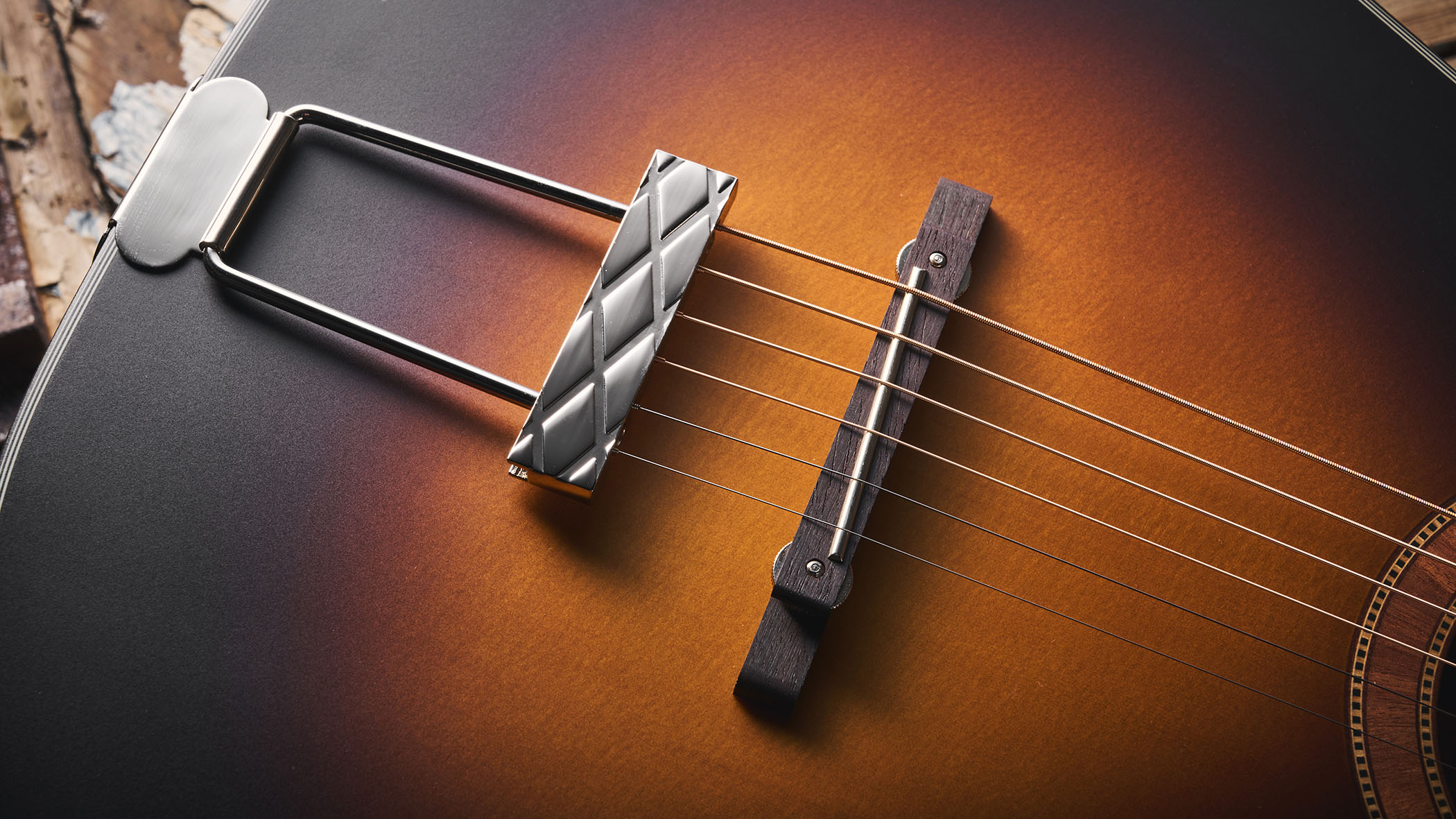
It’s doubtless that the tailpiece and floating bridge contribute to the slight ‘unamplified archtop’ timbre we detected, too. We took a listen to The Beatles’ You’ve Got To Hide Your Love Away and John’s 12-string there does have that similar trebly edge to it and so this guitar passes the ‘Fab Four’ test.
As far as playability and feel are concerned, the wide flat ’board and those low frets take a little getting used to, but once we’d spent some time playing, we found we could pretty much forget about both these factors and get on with the job of executing just about every 12-string guitar part we could remember.
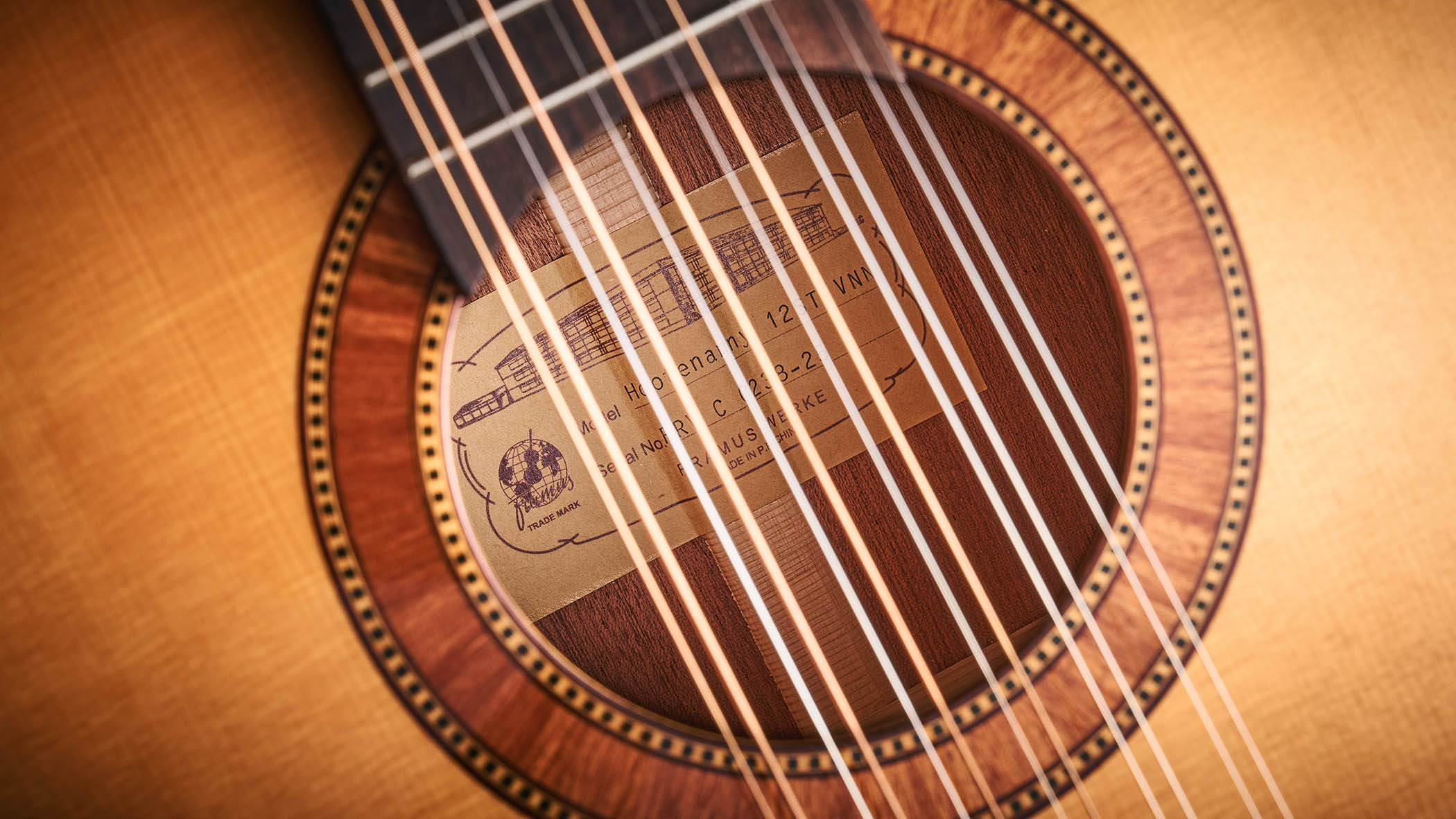
Over to the Hootenanny 6-string and we immediately categorised the sound as being rootsy, bluesy with a touch of front-porch Americana on the side. We’re sure the tailpiece and floating bridge play a serious sonic role here as both guitars share very similar traits.
If Delta blues is your thing, there’s a lot to be recommended, but if you’re looking for a more modern Martin/Gibson dread experience, you’re not going to find it with the Hootenanny. However, we’re happy that both instruments are exactly what they’re set out to be: snapshots of the past.
Verdict
Verdict: ★★★★☆
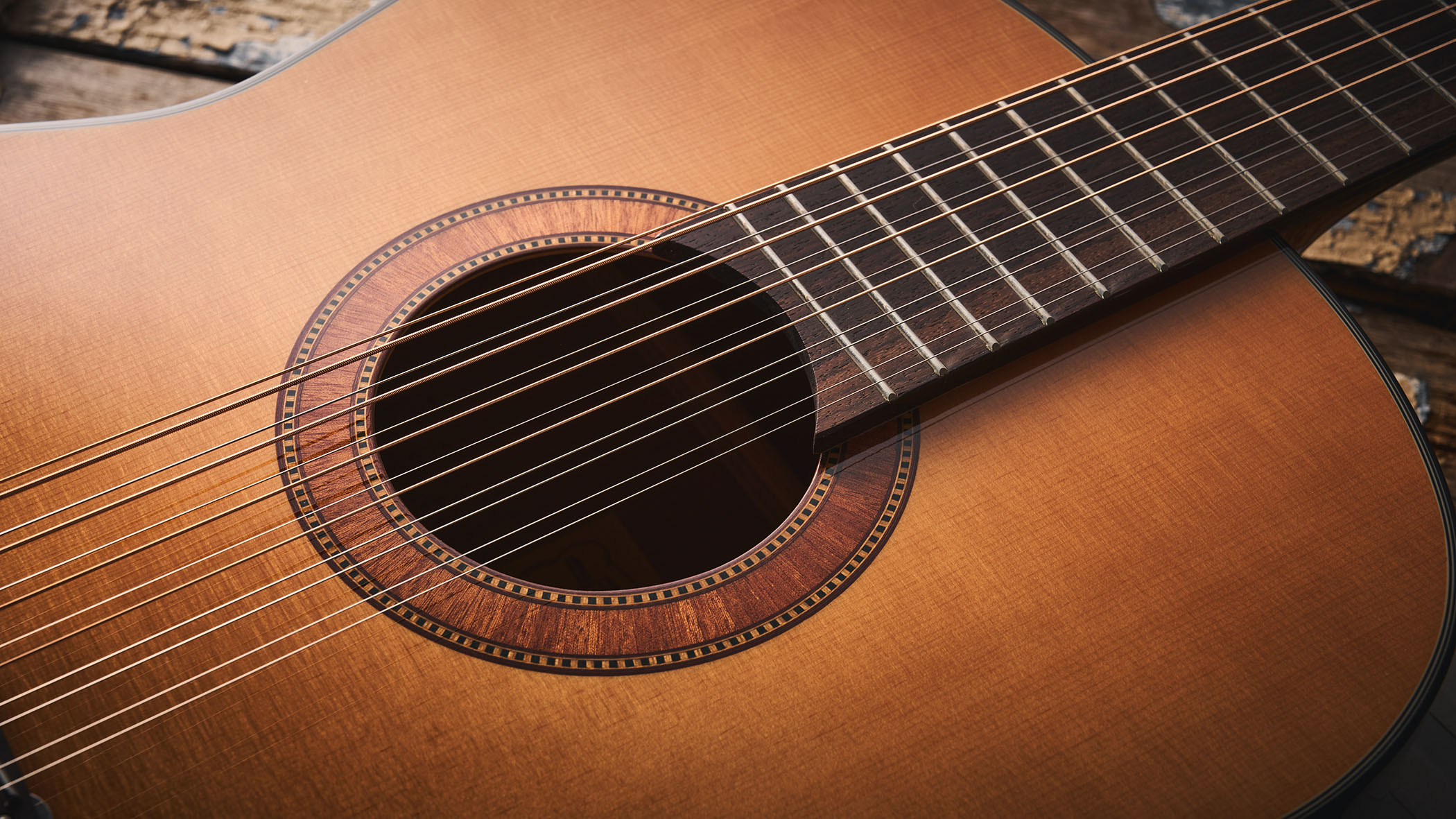
With instruments so specifically aimed at the target of yesteryear and with – as far as the 12 is concerned – a very specific instrumental voice, it’s always hard to judge them without letting any prejudices inspired by playing and listening to big-league acoustics for many years cloud your vision.
But that’s really not what these Hootenanny guitars are all about. These are voices from the past and will appeal to players who are seeking the particular niche that they represent.
Guitar World verdict: It’s true to say that there are guitars out there that would do a similar job – and many of them may cost less. But if it’s the whole ’60s chic, floating bridge, jazz-box tailpiece and (as far as the 12 is concerned) Beatles association that appeals to you, then we’d recommend you seek them out.
Hands-on videos
Thomann
- Best 12-string guitars 2025: our pick of 12-string acoustic and electric guitars
- This article first appeared in Guitarist. Subscribe and save.
With over 30 years’ experience writing for guitar magazines, including at one time occupying the role of editor for Guitarist and Guitar Techniques, David is also the best-selling author of a number of guitar books for Sanctuary Publishing, Music Sales, Mel Bay and Hal Leonard. As a player he has performed with blues sax legend Dick Heckstall-Smith, played rock ’n’ roll in Marty Wilde’s band, duetted with Martin Taylor and taken part in charity gigs backing Gary Moore, Bernie Marsden and Robbie McIntosh, among others. An avid composer of acoustic guitar instrumentals, he has released two acclaimed albums, Nocturnal and Arboretum.
You must confirm your public display name before commenting
Please logout and then login again, you will then be prompted to enter your display name.
